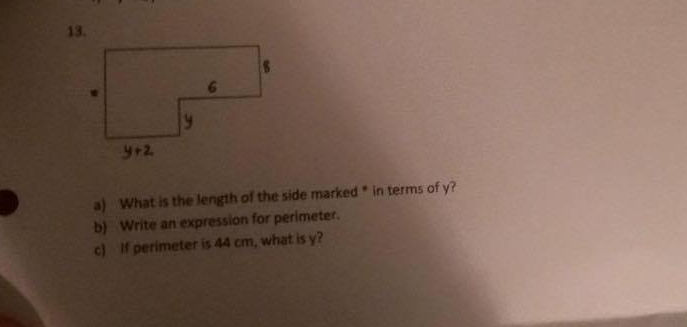Notes
Answers with working can be found at the bottom of this page. The first few questions are relatively straight forward. The thing to remember with algebra is that you don't always get a clean answer. when presented with an equation like
So try not to get too hung up on looking for that.
What I found when I was learning algebra was that sometimes I would forget the basic rules. For examples sometimes I would do the following:
But that goes against one of the primary rules, namely that we keep to alphabetical order. The correct answer is
Substitution
mathematicians are lazy. They like to shorten everything they can in an equation. for example
For example,
So for a substitution equation like
The substitution stuff appears to be more or less to improve your ability to use formula's, which is a large part of advanced mathematics.
Algebra is really just a way to represent complex relationships in mathematics. If you're having trouble understanding a question below, try to relate it back to something in the real world (a lot of your stuff will be based on geometric shapes. Senior maths generally uses graphs for Algebra).

So with regards to these questions, we're expressing values in terms of there relationships. So for question a) we can see for the sides representing the otherside of the shape there are two values, 8. We can represent there relationship with the
For b), we're doing the same. writing an expression that represents the relationship of these values to one another, and in relation to the perimeter of the object (where the
would give us the full rectangle. However, there's a bit missing from the object, which we need to subtract from our rectangle in order to accurately represent the object. The bit that's missing has a perimeter that can be described with the following expression (because it's a rectangle too):
You'll note that not the whole perimeter of the missing bit is missing, only the bottom half of it. Thus we only need to deduct half of it's perimeter. Giving the following:
For c), we plug the new value into our final equation from b) so that we have
Factorizing
Factorizing is the inverse of expanding in normal algebra. Where normally we're given an equation like
It gives us y so we can remove it too. Thus giving us
In general, the point of factorising is to re-arrange the equation. We're not trying to solve it, so we shouldn't be disappearing numbers (just re-arranging them).
The Hard Part
It get's a bit more complex if you're doing quadratic polynomials. I suspect that's a bit beyond what's expected of you, so feel free to skip this section and questions 10 & 11 if you're pressed for time.
With a quadratic you're given an equation that will look like the following
(often the = 0 might be skipped, that's OK, we're just showing it's there so that we know there's nothing on the otherside of the equation).
Of particular importance in the above equation is the relationship between the numbers b and c.
Specifically, they're made up of two smaller numbers, we'll call them i and j. The relationship between b and c and there factors i and j can be expressed as
The hard part is working out what i and j are. I'm not currently aware of any easy formula for working this out. You just have to pick numbers and check that they work.
For example, if we have a quadratic to factorize that looks like i and j that add up to 17 but multiply out to 72 we should eventually end up with 8 and 9 (
Thus we can factorize out the equation as follows:
Note in the above line we've ended up with
Q.E.D.:
So to recap:
We're doing the inverse of what we normally do. Instead of expanding the equation out, we're contracting it by looking for common base numbers throughout the equation.
It also helps that when you're multiplying numbers it doesn't matter which way round they go
What does matter though, is the sign.
Also, keep in mind the shorthand we're using.
Formulas
Perimeter of a rectangle:
Area of a Circle:
Questions
-
-
-
-
-
Tommy is measuring a $20 bill that he has in his possession. He notes that the top and bottom sides are three times as long as the left and right sides of the bill. Write an equation that expresses this relationship with regards to the perimeter of the $20 bill.
To answer this question You'll need the perimeter formula, and it might be helpful to draw the object being described. -
-
-
-
-
(HARD) Factorize the following:
-
(HARD) Factorize the following:
-
Factorize the following:
-
Factorize the following:
-
Factorize the following:
-
Given a circle with a radius of 4cm's, find the area of the circle (show your working). You can find the radius formula for substitution in the Formula section above.
Answers
Example Answers:
Answers to the questions begin here:
The formula for the perimeter of a rectangle is
N.b
Keen in mind that
This is a simple substitution given a formula which you can find under the formula section at the top of the page.
